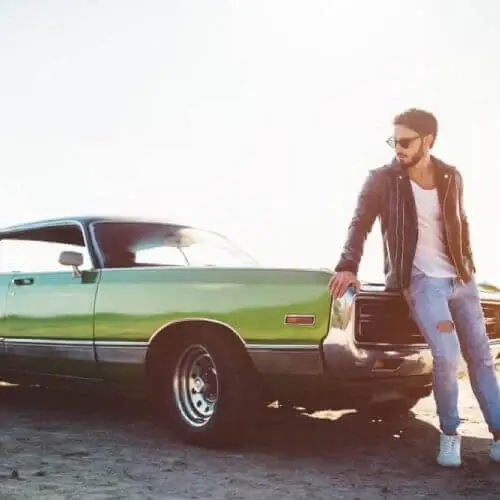Home / Compare Car Insurance / Vintage and classic car…
Vintage and classic car insurance
Compare the Market doesn’t currently compare specialty products for classic and vintage cars. However, you can use our comparison tool to look for suitable policies for standard car insurance products.






Key takeaways
- ‘Classic car insurance’ is a broad term for policies that cover classic, vintage and collectable vehicles.
- Some insurers offer speciality insurance for classic cars, while others provide standard car insurance products like comprehensive and third party insurance.
- The definition of a classic car may differ depending on where you live.
Expert tips for insuring your classic or vintage car
Our resident car insurance expert, Adrian Taylor, has helpful tips for insuring your weekend wheels.

Keep your policy up to date
It’s worthwhile keeping your policy up to date and your sum insured aligned with current value of your car. Unlike most motor vehicles, the value of vintage and classic cars can appreciate over time.
Consider roadside assistance
Having roadside assistance could be handy in case your classic car breaks down. Even though they generally run well, adding roadside to your policy could give you peace of mind while you’re driving.
Inform your insurer of modifications
A lot of classic cars have modifications which may not be automatically covered by a standard policy. It’s important to declare any mods your vehicle might have to your insurance provider, so they’re included in the claim assessment if they’re damaged by an insured event.
What is a classic car in Australia?
The term ‘classic car’ is not clearly defined in Australia and may differ depending on where you live. For example, in NSW, you can apply for classic vehicle registration (CVS) if your car is 30 years or older.1 Conversely, your car only needs to be 25 years old to be considered a classic in Victoria.2
Insurance for my classic car
What is classic car insurance and how does it work?
‘Classic car insurance’ is generally used as a blanket term that refers to insurance options available for a vintage and classic vehicles.
Some insurers offer specialised insurance, which may include additional benefits for classic and vintage cars. However, you could also cover your car with standard car insurance products like Comprehensive, Third Party Fire and Theft and Third Party Property Damage policies.
Which type of insurance suits a classic car?
It depends on how much cover you’re looking for. Every registered vehicle in Australia must have Compulsory Third Party (CTP) insurance or your state’s equivalent (e.g. Green Slip in NSW). However, these policies don’t cover damage to the insured vehicle.
While specialty classic car insurance policies are available, standard cover could also provide adequate financial protection for your car. Comprehensive car insurance may offer sufficient cover for your vehicle, which could come in handy if your classic car is damaged or destroyed.
Third party insurance policies like Third Party Fire and Theft and Third Party Property Damage are also available to purchase, but only provide limited cover for your own car.
The table below offers a summary of what each standard car insurance types usually include and exclude.
| Scenario | Third Party Property Damage | Third Party Fire and Theft | Comprehensive | CTP/Green Slip |
|---|---|---|---|---|
| Damage to your own vehicle following a collision | ✗ | ✗ | ✓ | ✗ |
| Loss or damage to a third party’s vehicle/property caused by your car (legal liability) | ✓ | ✓ | ✓ | ✗ |
| Loss or damage to your own vehicle caused by weather (e.g. storm, flood, hail) | ✗ | ✗ | ✓ | ✗ |
| Loss or damage to your vehicle caused by theft | ✗ | ✓ | ✓ | ✗ |
| Hire car after theft | ✗ | ✓ | ✓ | ✗ |
| New car replacement (if your car is less than two years old) | ✗ | ✗ | ✓ | ✗ |
| Loss or damage to your vehicle caused by fire | ✗ | ✓ | ✓ | ✗ |
| Loss or damage of personal possessions/effects | ✗ | ✗ | ✓ | ✗ |
| Damage to your vehicle caused by an uninsured driver | ✓ | ✓ | ✓ | ✗ |
| Emergency transport and/or accommodation | ✗ | ✗ | ✓ | ✗ |
| Towing | ✗ | ✓ | ✓ | ✗ |
| Key replacement | ✗ | ✗ | ✓ | ✗ |
| Legal liability for injuries or death to other people | ✗ | ✗ | ✗ | ✓ |
| Always read the Product Disclosure Statement (PDS) for more information on inclusions and exclusions. The Target Market Determination (TMD) can also help you figure out if the product is right for you. | ||||
What do specialist classic car insurance policies cover?
 Here are some benefits some specialist policies may also include:
Here are some benefits some specialist policies may also include:
- Laid up cover. If you’re in the process of restoring your classic or vintage car, a specialist insurance provider could lower the cost of your premium, as your car is only covered for storage and transit.
- Modifications cover. Your provider may cover the repairs or replacement of modifications or fittings to your car if they’re damaged in certain events.
- Salvage rights. Depending on the age of your car, you could retain the rights to your vehicle if it’s reduced to scrap after it’s written off.
Compare the Market doesn’t currently compare policies with these specialist features. You should always read the PDS and the TMD of any insurance product to check their specific offerings.
How much does classic car insurance cost?
There are several factors that can influence how much you pay for insurance for your classic car, including:
- The agreed or market value of your car
- Your car’s model, age and kilometres driven
- Your insurance claims history
- How long you’ve held your licence
- Where the car is stored at night
- Where you live
- How regularly you drive your car.
What’s the difference between agreed and market value car insurance?
Agreed value is the amount of cover you and your insurer agree on to insure your vehicle. In the event of a total loss, the agreed value is the amount you’re covered up to if your claim is successful. This amount is set at the start of the policy and is outlined in your Certificate of Insurance.
Market value is calculated based on the resale value of your car. This value is determined at the time it’s written off.
Find out more about the differences between agreed and market value car insurance.
Meet our car insurance expert, Adrian Taylor
As a General Insurance expert with over 13 years’ experience in financial services, Adrian Taylor is passionate about demystifying car insurance for consumers, so they have a better understanding of what they’re covered for. Adrian’s goal is to make more information available from more insurers, to make it easier to compare and save.
Want to know more about car insurance?
1 Registering and using a classic vehicle – NSW Government. Accessed May 2025.
2 Get a club permit – VicRoads. Accessed May 2025.